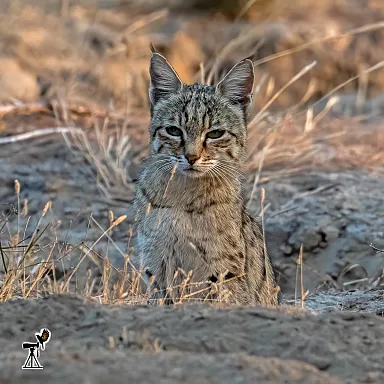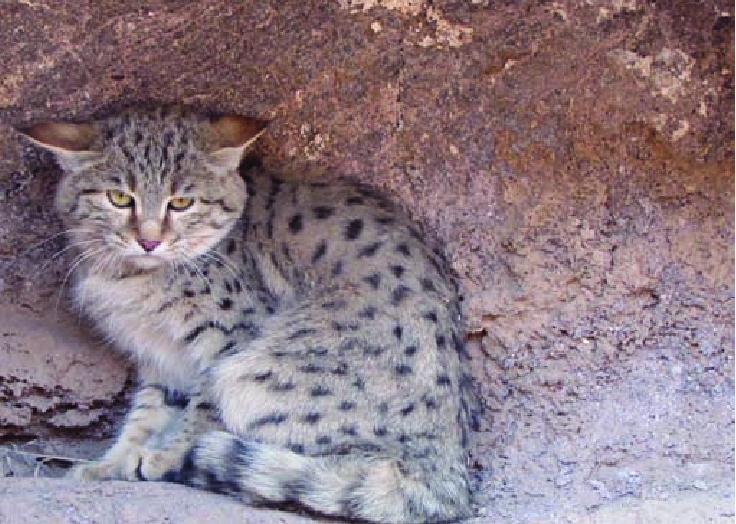
The Afro-Asiatic wildcat, Felis lybica, is a widespread and highly adaptable small wild cat found across much of Africa, the Middle East, and into Central Asia and parts of India. Oen considered the direct ancestor of our domestic cats, it shares many physical similarities but is more slender with longer legs. Its coat typically ranges from sandy yellow to grayish-brown, with faint stripes and spots that provide excellent camouflage in its varied habitats, which include grasslands, savannas, semi-deserts, and scrublands. Primarily nocturnal and solitary, the Afro-Asiatic wildcat is a skilled and opportunistic hunter, preying mainly on rodents, birds, reptiles, and insects, showcasing its remarkable ability to thrive in diverse and even harsh environments.

The Afro-Asiatic wildcat plays a significant ecological role as a natural predator of small animals across its vast range. By controlling populations of rodents and other small vertebrates, they help prevent agricultural damage and the spread of diseases carried by these prey species. Their widespread presence indicates a healthy balance within many different ecosystems, acting as a natural pest control agent. However, a major threat to their survival is hybridization with domestic cats, which dilutes their genetic purity and wild adaptations. Protecting pure populations of the Afro-Asiatic wildcat is crucial not only for preserving the genetic heritage of our own beloved pets but also for maintaining the ecological integrity and natural pest control services provided by this ancient and resilient feline across two continents.
Every day, wild cats around the world face threats like habitat loss, poaching, and natural climate progression. But hope isn’t lost. With your support, we can protect these majestic animals and preserve their habitats.
Join our growing community of wildlife champions and help create a safer future for all 40 wild cat species.
Zoo-EV is a nonprofit organization dedicated to the protection and preservation of the world’s 40 wild cat species through education, community engagement, and conservation initiatives. Zoo-EV is recognized as a 501(c)(3) tax-exempt organization by the IRS, with the Employer Identification Number (EIN) 88-3636567.